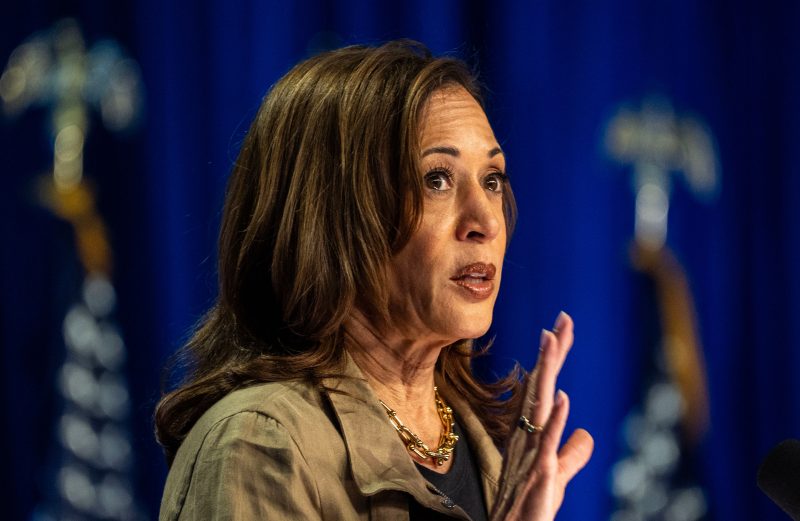
Harris vs. Trump: Bridging the Economic and Border Divide – Does it Make a Difference?
In the world of politics, stark contrasts and differing viewpoints are commonplace, serving as a central pillar of democratic discourse. As we delve into the economic and border policies of Vice President Kamala Harris and former President Donald Trump, it becomes evident that these two figures stand at opposite ends of the spectrum. Their respective approaches to these critical matters paint a vivid picture of the deep divide in the American political landscape.
On the economic front, Harris and Trump have espoused fundamentally different visions. Harris, a Democrat known for her progressive views, advocates for policies aimed at promoting social welfare and economic equality. Her emphasis on initiatives such as increasing the minimum wage, expanding access to healthcare, and investing in green energy reflects a commitment to fostering a more equitable society.
Conversely, Trump, a Republican who championed a pro-business agenda during his presidency, prioritized deregulation, tax cuts, and trade protectionism as a means of stimulating economic growth. His America First approach was characterized by a focus on bolstering domestic industries and reducing reliance on foreign imports, with an eye towards revitalizing the manufacturing sector.
The divergent views of Harris and Trump on the economy raise key questions about the role of government in shaping economic policies. While Harris leans towards a more interventionist approach that seeks to address social inequalities and prioritize environmental sustainability, Trump’s stance aligns with a traditional conservative outlook that emphasizes free-market principles and limited government intervention.
Turning to the issue of border security, Harris and Trump offer contrasting perspectives that underscore the complexity of immigration policy in the United States. Harris, who has taken a more compassionate stance on immigration, has emphasized the importance of addressing root causes of migration, such as economic instability and violence in Central America. Her approach centers on diplomacy, foreign aid, and cooperation with international partners to tackle the underlying factors that drive migration.
In stark contrast, Trump’s hardline stance on immigration was marked by efforts to build a border wall, restrict legal pathways to immigration, and implement a zero-tolerance policy towards undocumented immigrants. His administration’s aggressive enforcement measures and rhetoric fueled debates about national security, sovereignty, and the treatment of asylum seekers and refugees.
The contrasting views of Harris and Trump on border security highlight the divergent strategies that policymakers can pursue in addressing the complex challenges posed by immigration. While Harris emphasizes a more holistic and multilateral approach that seeks to address the root causes of migration, Trump’s approach is characterized by a focus on enforcement, deterrence, and prioritizing the interests of American citizens.
As the debate over economic and border policies continues to unfold, it is clear that the contrasting visions of Harris and Trump reflect broader ideological divisions within American society. The choices made by policymakers in these critical areas will not only shape the future of the economy and immigration policy but also reflect the values and priorities of the nation as a whole. In a time of heightened political polarization and discord, understanding and engaging with these divergent viewpoints is essential for fostering informed debate and charting a path forward towards a more prosperous and secure future.
